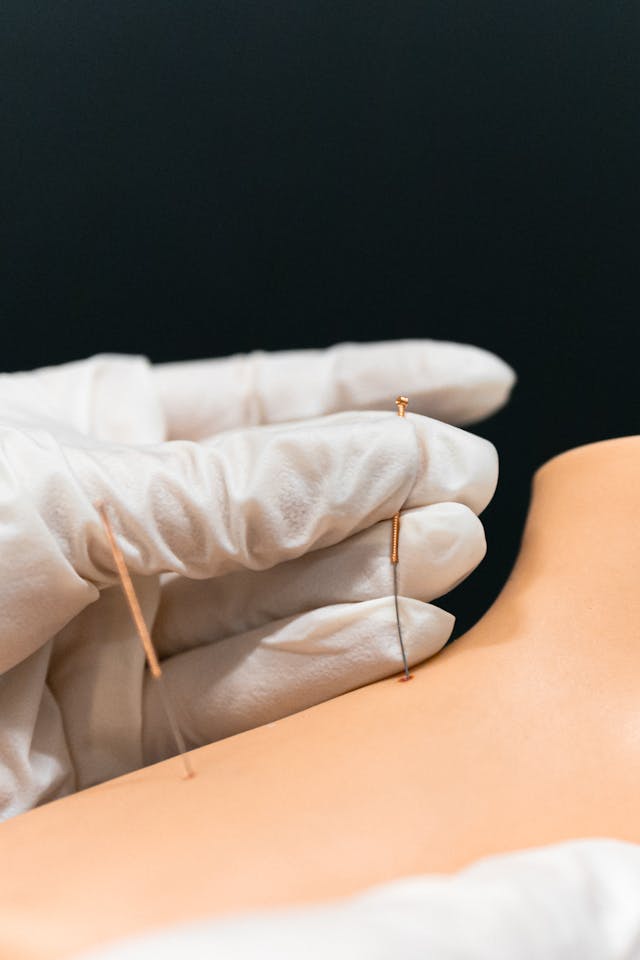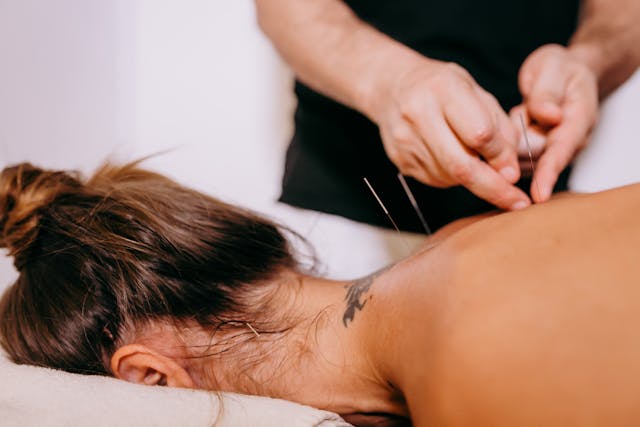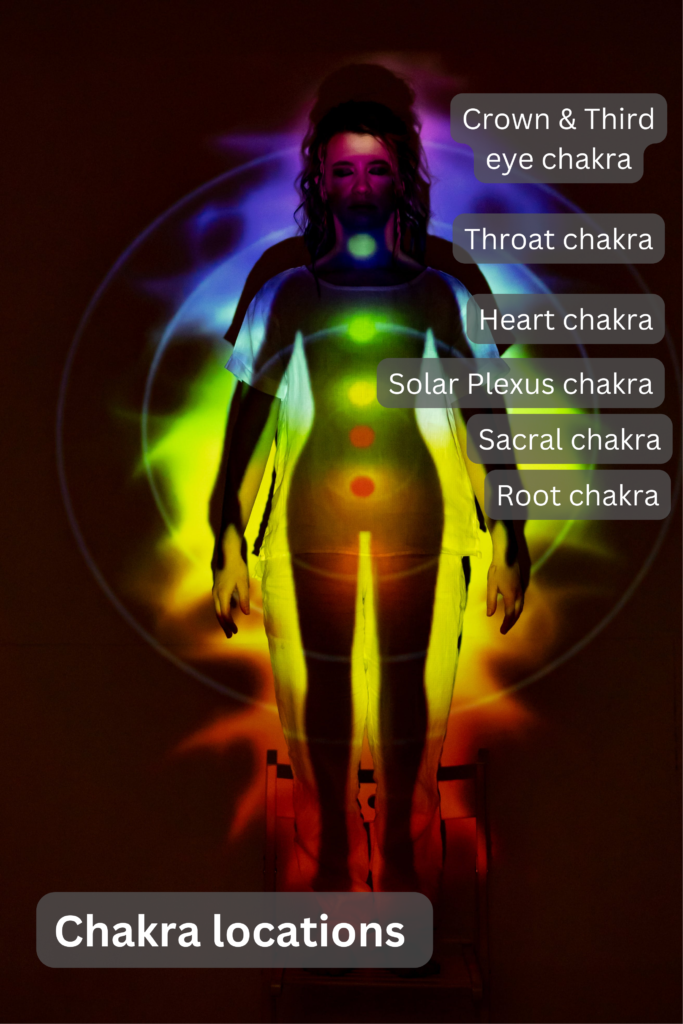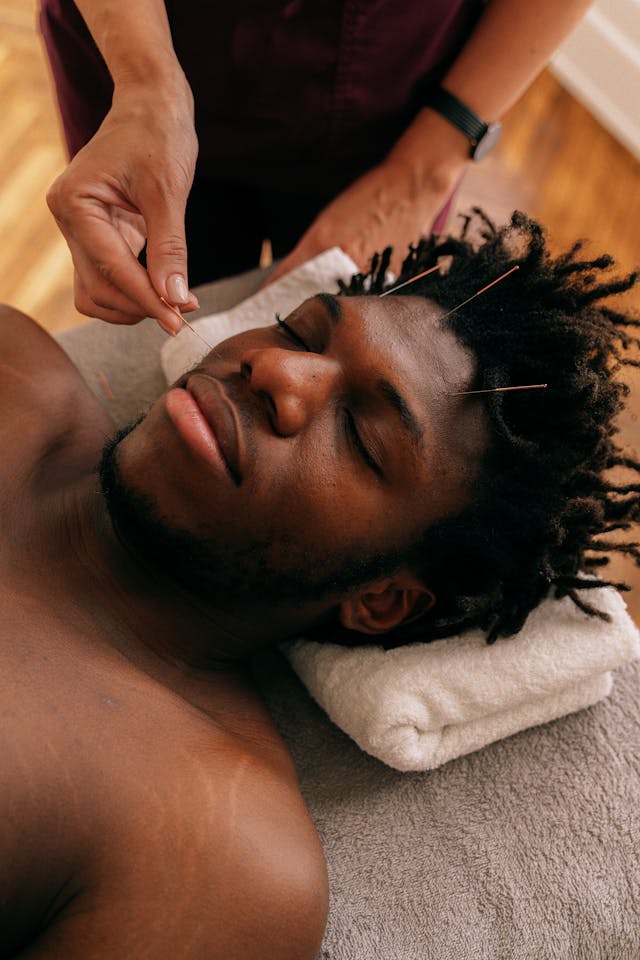Acupuncture, a key component of traditional Chinese medicine (TCM), has been practiced for thousands of years to alleviate physical ailments and promote mental well-being. This ancient therapy involves inserting thin needles into specific points on the body, known as acupoints, to balance the body’s energy, or Qi (pronounced “chee”). The practice is deeply rooted in Chinese philosophy, which views health as a harmonious balance of the body’s vital energies. According to TCM, illness occurs when these energies are blocked or out of balance.
The history of acupuncture dates back over 2,500 years, originating in China during the Shang Dynasty. Ancient Chinese texts, such as “The Yellow Emperor’s Classic of Internal Medicine,” document its use and principles. Historically, acupuncture was used by Chinese emperors, physicians, and commoners alike, and it has been passed down through generations, evolving into a well-respected and widely practiced form of therapy.

The mechanism by which acupuncture works is complex and not entirely understood by modern science. Still, it is believed to stimulate the nervous system, increase blood flow, and release endorphins, the body’s natural painkillers. By targeting specific acupoints, acupuncture can influence various bodily functions, such as the immune, circulatory, and digestive systems. This holistic approach addresses the root cause of ailments rather than merely treating symptoms, making it a comprehensive form of healthcare.
One of the most profound effects of acupuncture is its ability to relieve chronic pain, such as back pain, arthritis, and migraines. Many patients report significant pain reduction and improved mobility after just a few sessions. Additionally, acupuncture has been shown to reduce stress and anxiety, enhance mood, and promote better sleep, contributing to overall mental well-being. This is particularly important in our fast-paced modern world, where stress-related conditions are prevalent.
The experience of an acupuncture session is unique and deeply personal. During a session, a practitioner will typically conduct a thorough assessment, which includes tongue and pulse inspection. In Chinese medicine, the tongue’s appearance and the quality of the pulse are essential diagnostic tools. The tongue’s color, shape, and coating can reveal imbalances in the body’s organs and systems, while the pulse’s rhythm and strength provide insights into the flow of Qi. This comprehensive evaluation allows the practitioner to tailor the treatment to the individual’s specific needs.
Once the assessment is complete, the practitioner inserts fine needles into the acupoints, which may be located on various parts of the body, including the back, abdomen, arms, and legs. The needles are typically left in place for 20 to 30 minutes. Contrary to common fears, the insertion is usually painless, and many people find the experience relaxing, often feeling a sense of calm and even euphoria. After a session, it is common to feel deeply relaxed, with some experiencing immediate relief from their symptoms. However, the number of sessions required varies depending on the condition being treated and the individual’s response to therapy. Chronic conditions often require multiple sessions over several weeks or months to achieve lasting results.

Acupuncture is a versatile therapy that can be used by a wide range of people, from young children to the elderly. It is particularly beneficial for those seeking a natural and holistic approach to health care, whether for preventive measures or as a complement to conventional treatments. Pregnant women can also benefit from acupuncture, as it can alleviate symptoms such as morning sickness, back pain, and labor pain.
While acupuncture is not traditionally associated with the concept of chakras, which originate from Indian yogic traditions, some modern practitioners integrate the two systems. Chakras are energy centers within the body, and balancing these centers is believed to promote physical and emotional health. Some acupuncturists may use acupuncture points that correspond to the chakras, combining principles from both systems to enhance the therapeutic effects. Learn more about Chakras by clicking on the link.

Acupuncture is a time-honored therapy with a rich history and a wide range of applications for physical and mental health. Its holistic approach, focusing on the balance of the body’s energies, makes it a powerful tool for achieving and maintaining wellness. Whether you are seeking relief from chronic pain, stress, or other health issues, acupuncture offers a natural and effective solution. Its ability to diagnose through tongue and pulse inspection highlights the depth of understanding and precision involved in this ancient practice. Embracing acupuncture can lead to profound improvements in health and well-being, making it a valuable addition to any health regimen.
Love Life x
References:
- Cheng, X. N., & Deng, L. (1999). “Chinese Acupuncture and Moxibustion.” Foreign Languages Press.
- Maciocia, G. (2005). “The Foundations of Chinese Medicine: A Comprehensive Text.” Elsevier Churchill Livingstone.
- Deadman, P., Al-Khafaji, M., & Baker, K. (2007). “A Manual of Acupuncture.” Journal of Chinese Medicine Publications.
- World Health Organization. (2003). “Acupuncture: Review and Analysis of Reports on Controlled Clinical Trials.”
- Langevin, H. M., & Yandow, J. A. (2002). “Relationship of Acupuncture Points and Meridians to Connective Tissue Planes.” Anatomical Record.
- Ernst, E. (2006). “Acupuncture—A Critical Analysis.” Journal of Internal Medicine.
- National Center for Complementary and Integrative Health. “Acupuncture: In Depth.” (nccih.nih.gov).

